Do you like cycling? So you will also fall in love with the Lednice-Valtice area! The best way to discover the beauty of the local landscape and cultural monuments is on a bike! And don’t worry, the route runs almost flat all the time. If it tempted you, come with us on a tour of South Moravia.
The Lednice-Valtice area is one of the largest composed landscapes in the world. The composed landscape combines the work of nature and man. In an area of 300 km2, there are many amazing cultural and natural monuments, which is why this area is listed in UNESCO World heritage.
During the 18th and 19th centuries, the properties belonged to the House Liechtenstein, whose main seat was at Valtice Castle. They owned a relatively large area along both sides of the Moravian-Austrian border. There are also ponds, parks, a game reserve with part of the floodplain forest and several other small buildings and castles. If you want to see all places in one day, we recommend choosing a bicycle. Riding the Lednice-Valtice area by bike is a pleasant combination of sports, cultural and outdoor activities.
1. Floodplain forest – Dyje nature park
The cycling route we have chosen leads from Břeclav – a 44-kilometre circuit completely along the plain and back to the city. In the beginning, a pleasant journey through the nature park awaits you, where there are beautiful floodplain forests. Niva Dyje Park is one of the protected areas in which several specially protected species of animals live.
Our route around the Lednice-Valtice area, Mapy.cz
Why we choose to stay in Břeclav
Most tourists stay in Valtice or Lednice, so everything there is much more expensive. The only cheaper option is Airbnb… So, we decided to stay in Břeclav, where restaurants and hotels are cheaper, and it’s also quieter. The benefit is, you will see how Czech people live in a small city.
It’s also very easy to get to Břeclav. The city is on the international railroads, so you can get there by direct train from Berlin, Vienna, Bratislava or Budapest and, of course, from Prague, Brno and other Czech cities. You can buy the train ticket online at Omio.com.
2. John’s Castle
The next stop is Jan’s castle, translated as John’s Castle. It was built as an artificial ruin and dates from the 19th century. The castle is named after Prince Jan Adam I of Liechtenstein, the first owner of the Lednice estate and was built to live in. It is, therefore, a small hunting lodge. There are plenty of stalls around the castle with snacks. It is a very popular stop for cyclists if you just need a snack and take a short break.
3. Lednice Chateau
Not far from Jan’s Castle is the beautiful and famous Lednice Chateau. The appearance of the castle dates from the 19th century when Prince Alois II from Liechtenstein had it rebuilt into a summer residence in the spirit of English Gothic. The castle offers three visiting tours. On the ground floor, there are representative halls with carved ceilings and distinctive wood panelling. The first floor served as accommodation rooms for the family, and there are rooms for children and their nannies on the second floor. Around the chateau is a large park/garden, which is very carefully maintained. Right next to the chateau is a greenhouse, where you can admire the rarest Czech greenhouse plant – a cycad tree up to 500 years old.
There is a ban on cycling inside the park, so you need to walk. For this reason, we didn’t visit the famous minaret, which is located about 5 kilometres from the castle. It is a unique building that served as a lookout tower. We decided to skip it this time because we would have to lead the bike for a long time, and we didn’t want that.
4. Apollo’s Temple
A small chateau stands on a hill on a lakeshore. It was built in the Empire style with antique elements and is dedicated to the sun god Apollo. However, you would look in vain for his statue here. Apollo is depicted here only on the front relief in his solar car. In the past, the chateau served more as a lookout tower, because from its roof, there is a really beautiful view of the surroundings. For a small entrance fee, you can climb up the stairs and enjoy a beautiful spectacle. Inside, you can see photos from the castle renovation after the communist regime, when it was quite damaged.
5. Temple of the Three Graces
A small temple built in the neoclassical style stands on the southern shore of the Middle Pond. It is built in a semicircle and consists of a colonnade of twelve Ionic columns. In the middle of the semi-circular floor plan stands a sculpture – the Three Graces. She is the goddess of beauty and charm. The building served as a residence for staff and a summer house at the same time. In the centre of the temple is a living room with an impressive painting, which today serves as a snack bar. If you are thirsty, stop here.
6. Chapel of St. Hubert
A small chapel hiding in the forest is one of the youngest buildings. It was built in 1855 and is dedicated to St. Hubert – the patron saint of hunters and hunters. There are even marks of stonemasons on the sandstone stones so that the building evokes a feeling of antiquity.
7. Rendez-vous – Temple of Diana
The next stop will pleasantly surprise you. The building, reminiscent of a Roman triumphal arch, actually served as a hunting lodge. The name Rendez-vous comes from French and means “date.” It points out that the nobility met here before the hunt began. The castle is also often called the Temple of Diana because it was dedicated to the goddess of hunting – Diana. Tours take place here, so if you are interested in what the main hall looks like, you can visit the interiors with a guide.
8. Valtice Chateau
The next stop on your journey will be Valtice Chateau – the main seat of the Liechtenstein family. The first mention of Valtice dates to the 12th century. After a repeated change of ownership, the Liechtensteins managed to unite the Valtice estate and build a ruling seat there. The castle was rebuilt several times and is a combination of Renaissance and Baroque. Part of the castle is a beautiful English park with an area of 15 hectares. The chateau offers several sightseeing tours and countless exhibitions, which change regularly throughout the year.
9. Colonnade on Reistna
The road to the colonnade leads a little uphill for the first time, so expect to sweat. The beautiful building is located among the Moravian vineyards and offers a wonderful view of the surroundings from its roof. The colonnade is located on the hill Homole, also called Reisten, nearly on the border with Austria. The Classicist monument was erected by Joseph I of Liechtenstein as a memorial to his late father and brothers.
10. Back to Břeclav
And now the way back to Břeclav awaits you. Don’t worry, this is a pleasant trail that leads slightly downhill, and the path is intertwined with beautiful Moravian vineyards.
 If you don’t want to miss any important monuments of the Lednice-Valtice area, the next day, you can go on another cycling trip, this time much shorter. Your journey will lead around another chateau Pohansko to the confluence of the largest Moravian rivers – the Dyje and Morava. It creates a natural border between three states – the Czech Republic, Slovakia and Austria. The confluence is located in a protected landscape of floodplain forests, full of river branches and swamps. In summer, be especially careful because mosquitoes thrive here.
If you don’t want to miss any important monuments of the Lednice-Valtice area, the next day, you can go on another cycling trip, this time much shorter. Your journey will lead around another chateau Pohansko to the confluence of the largest Moravian rivers – the Dyje and Morava. It creates a natural border between three states – the Czech Republic, Slovakia and Austria. The confluence is located in a protected landscape of floodplain forests, full of river branches and swamps. In summer, be especially careful because mosquitoes thrive here.Road to the confluence, Mapy,cz

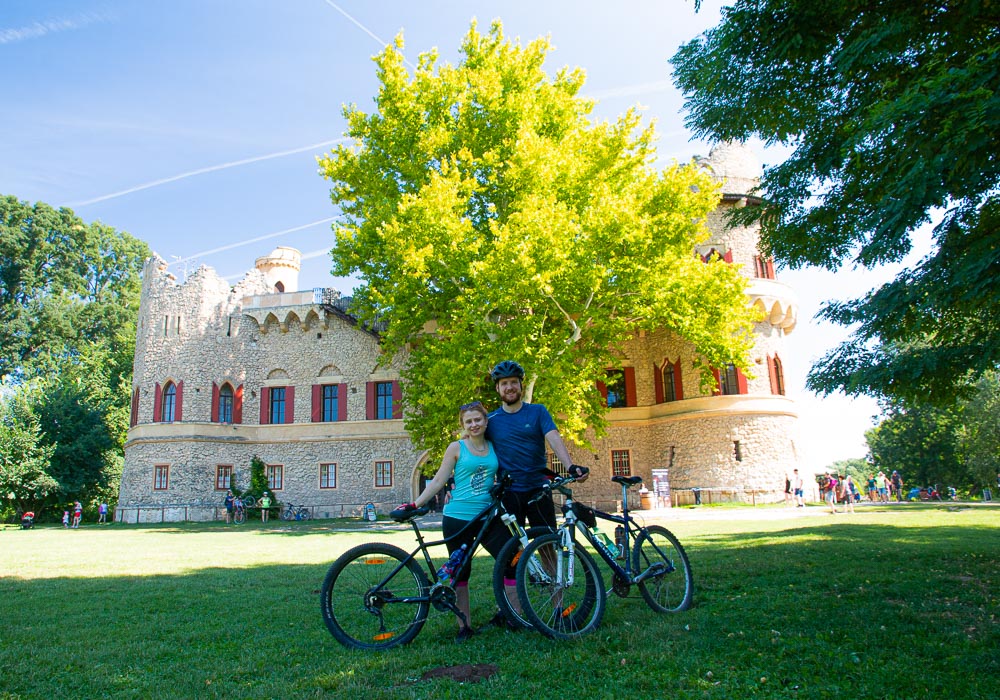
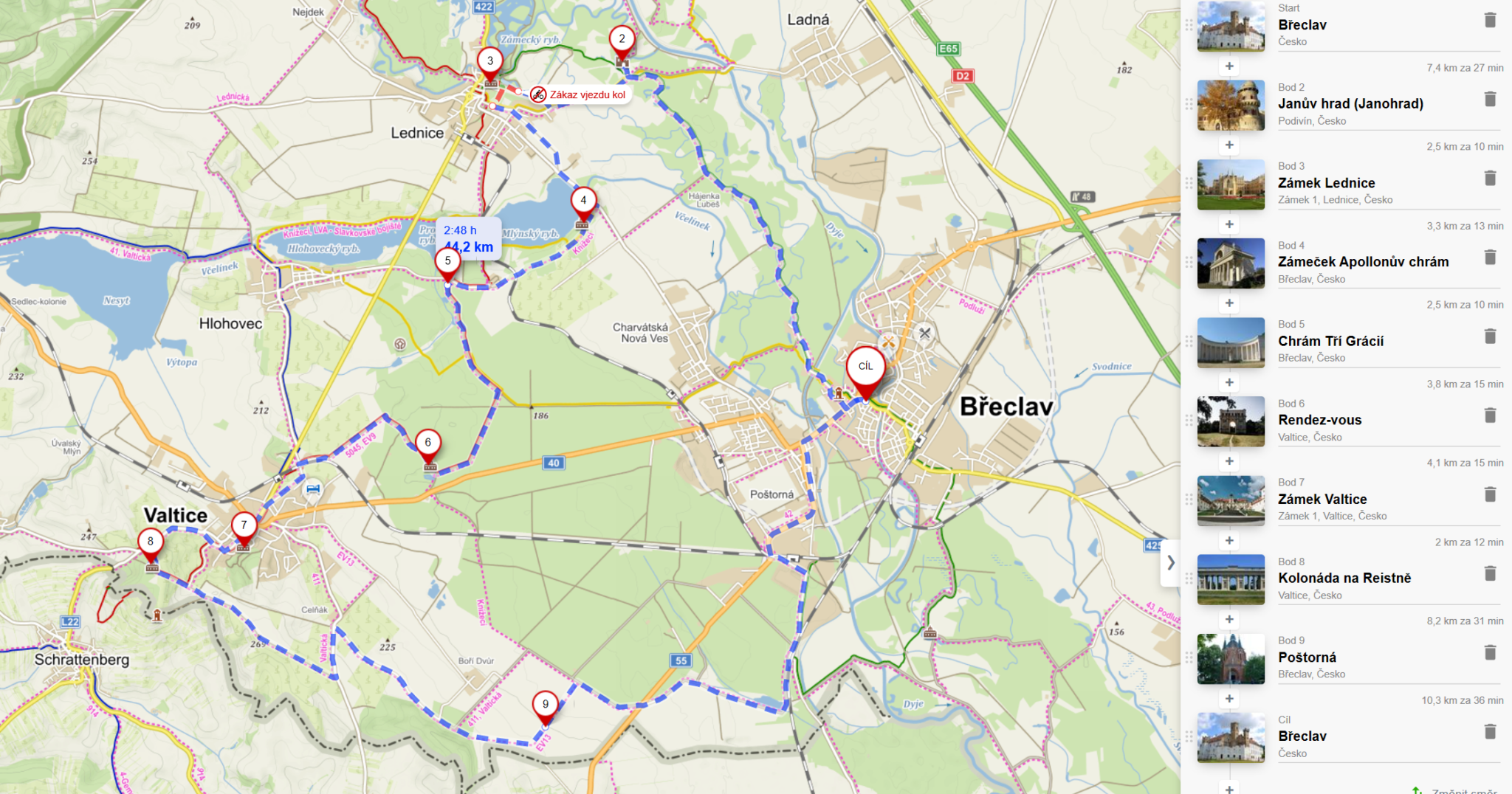
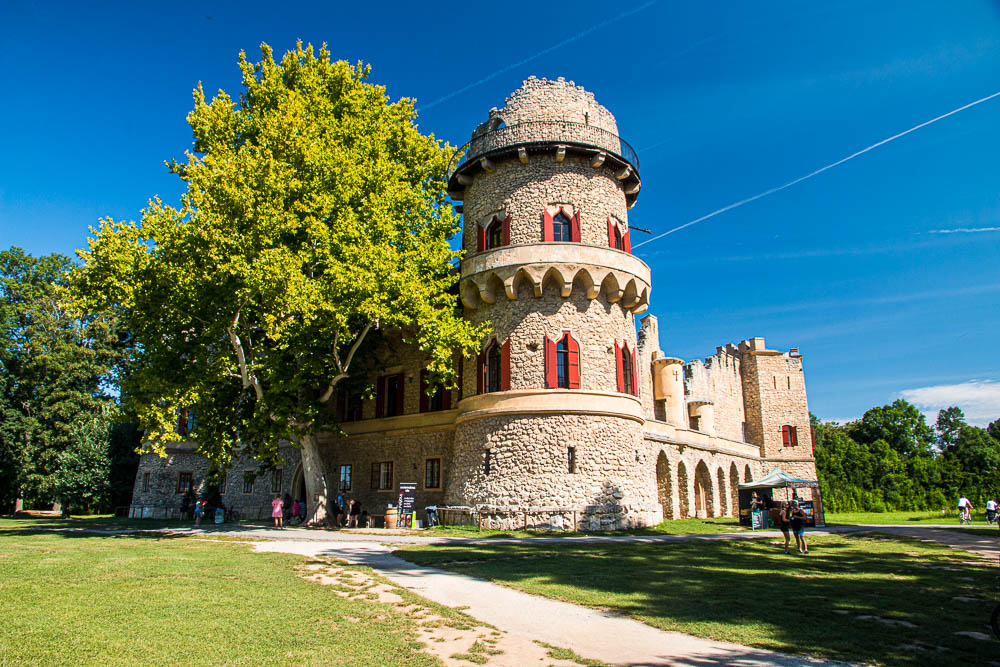
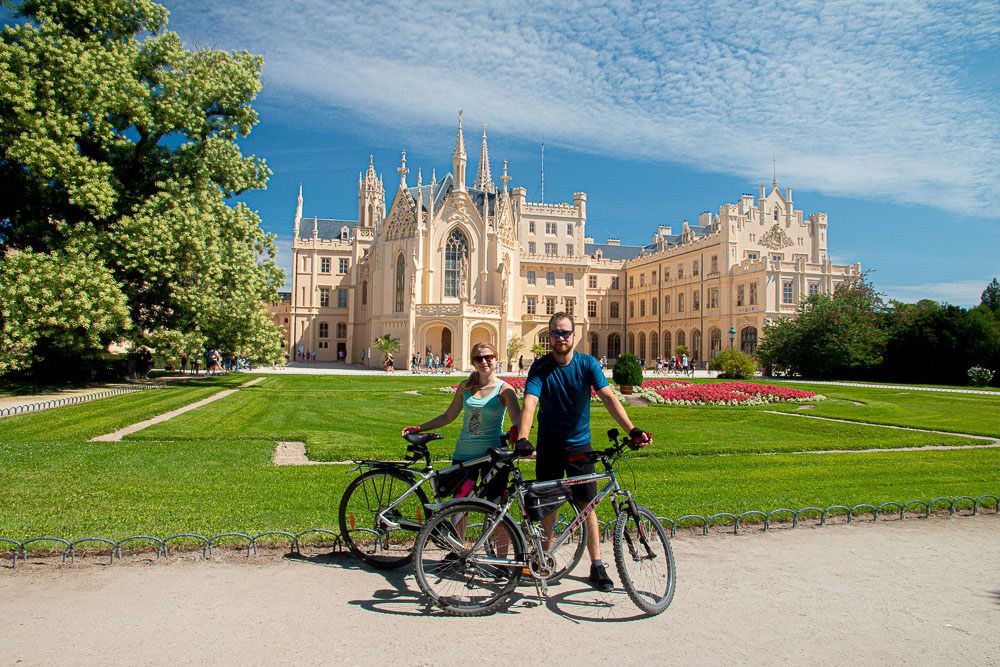

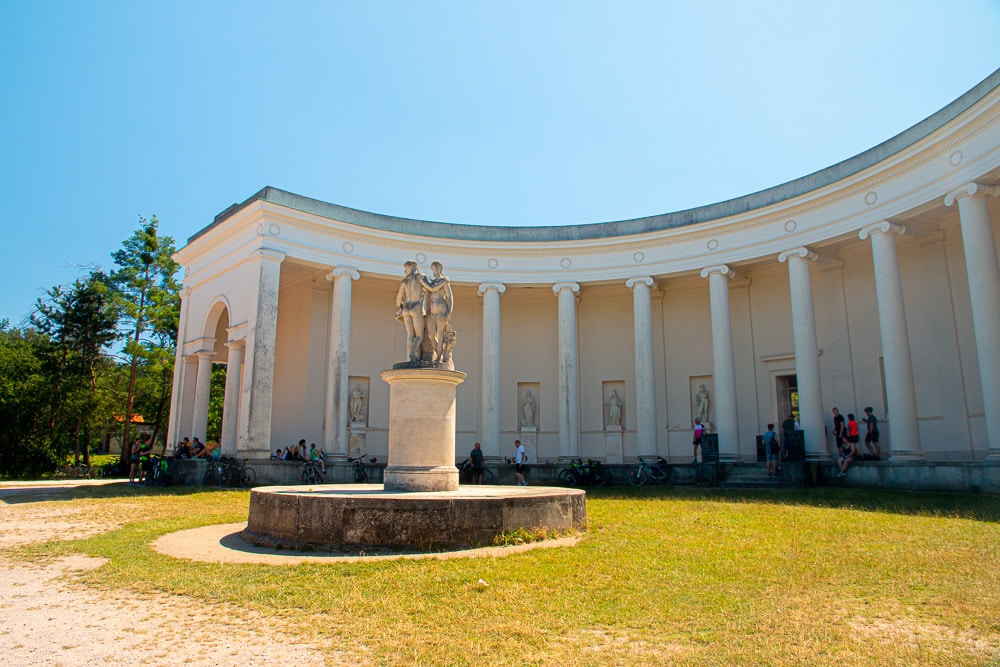
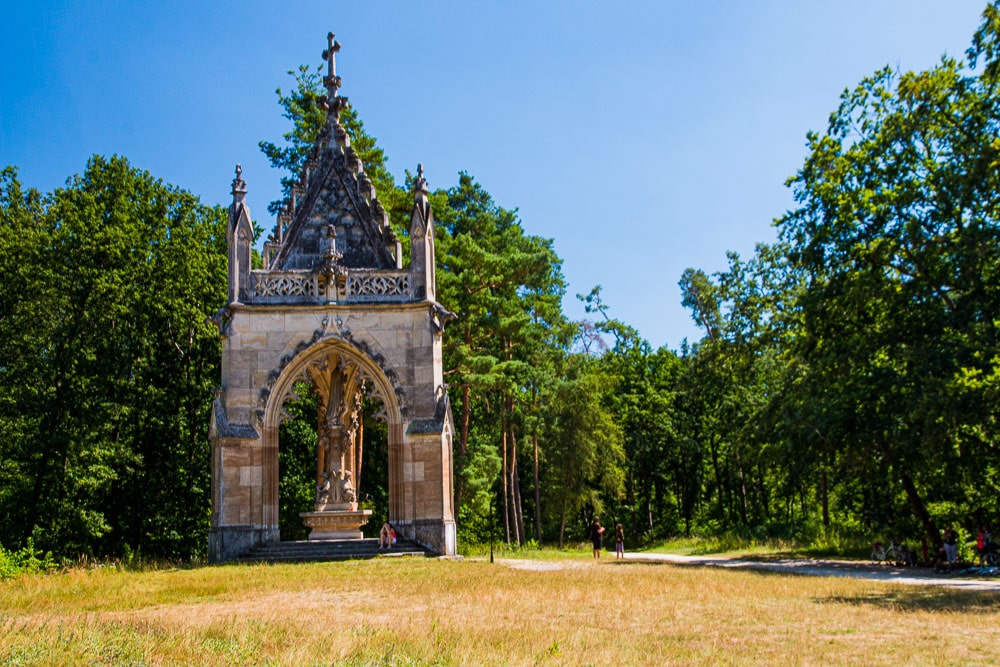
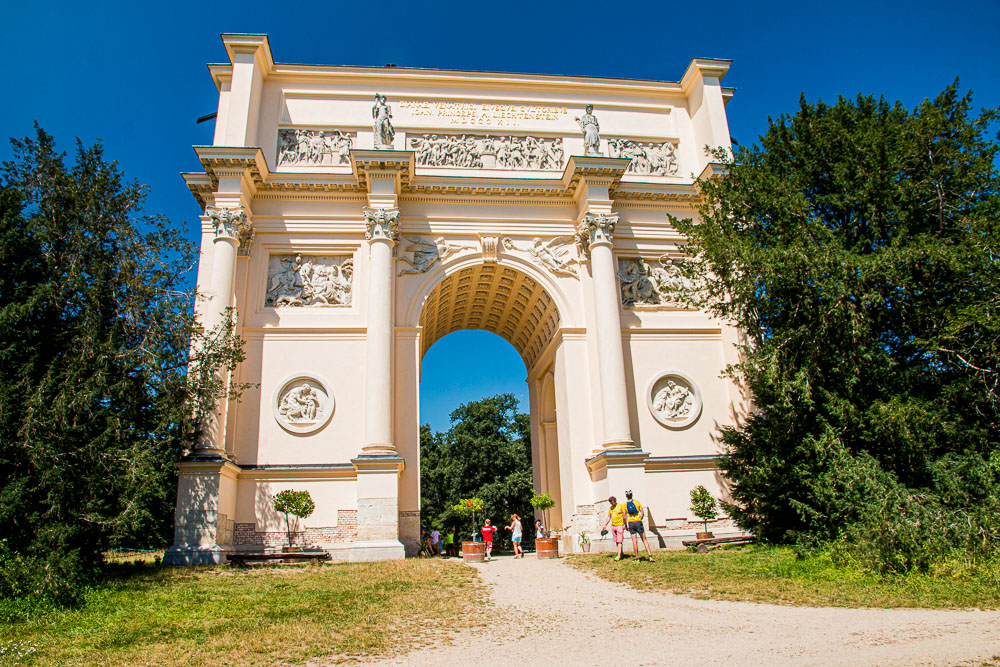
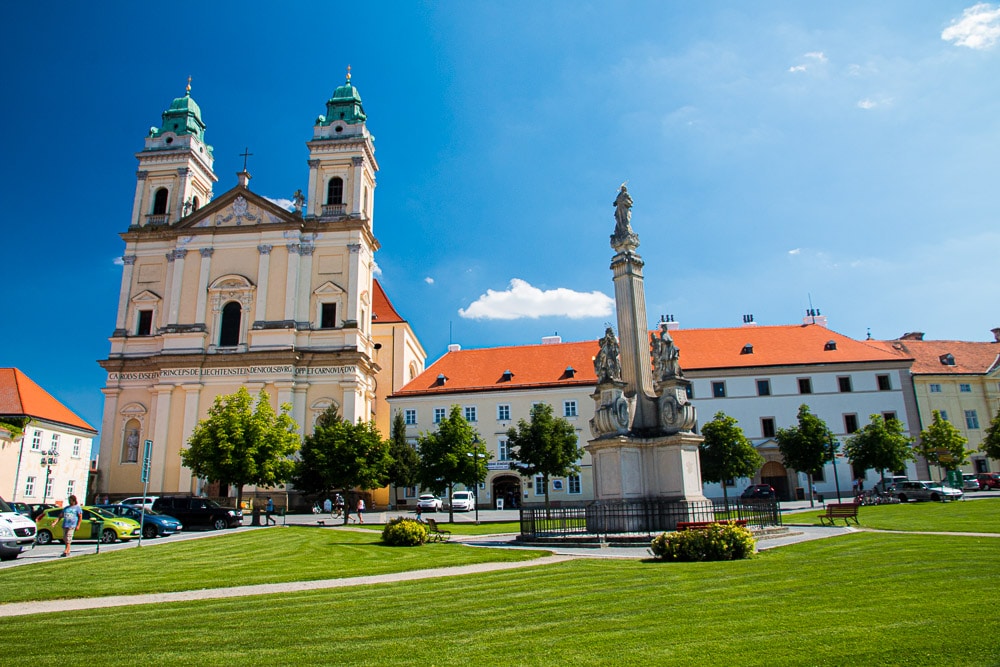
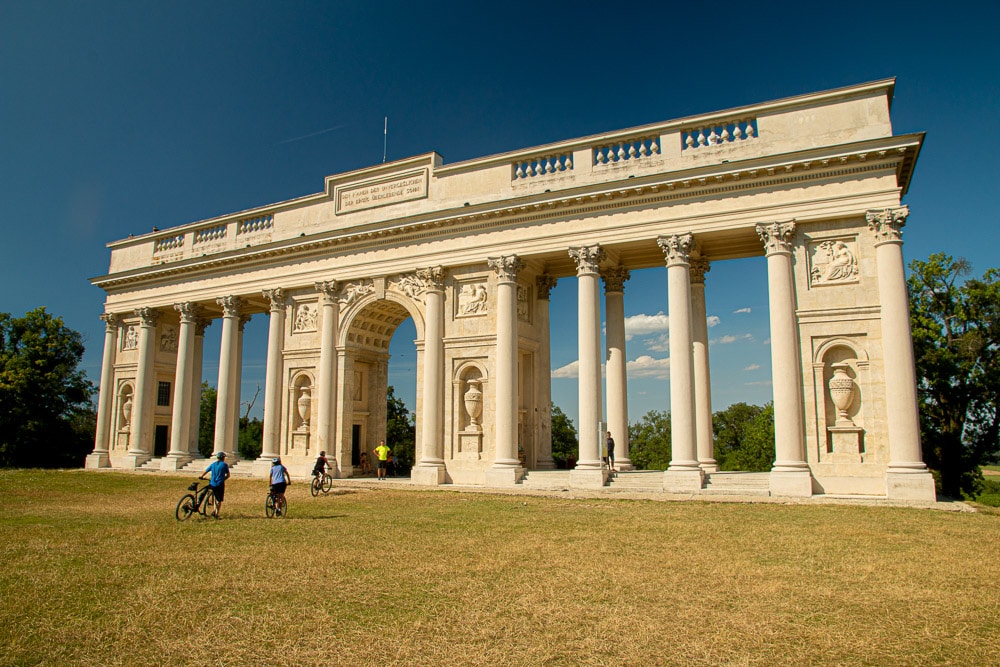
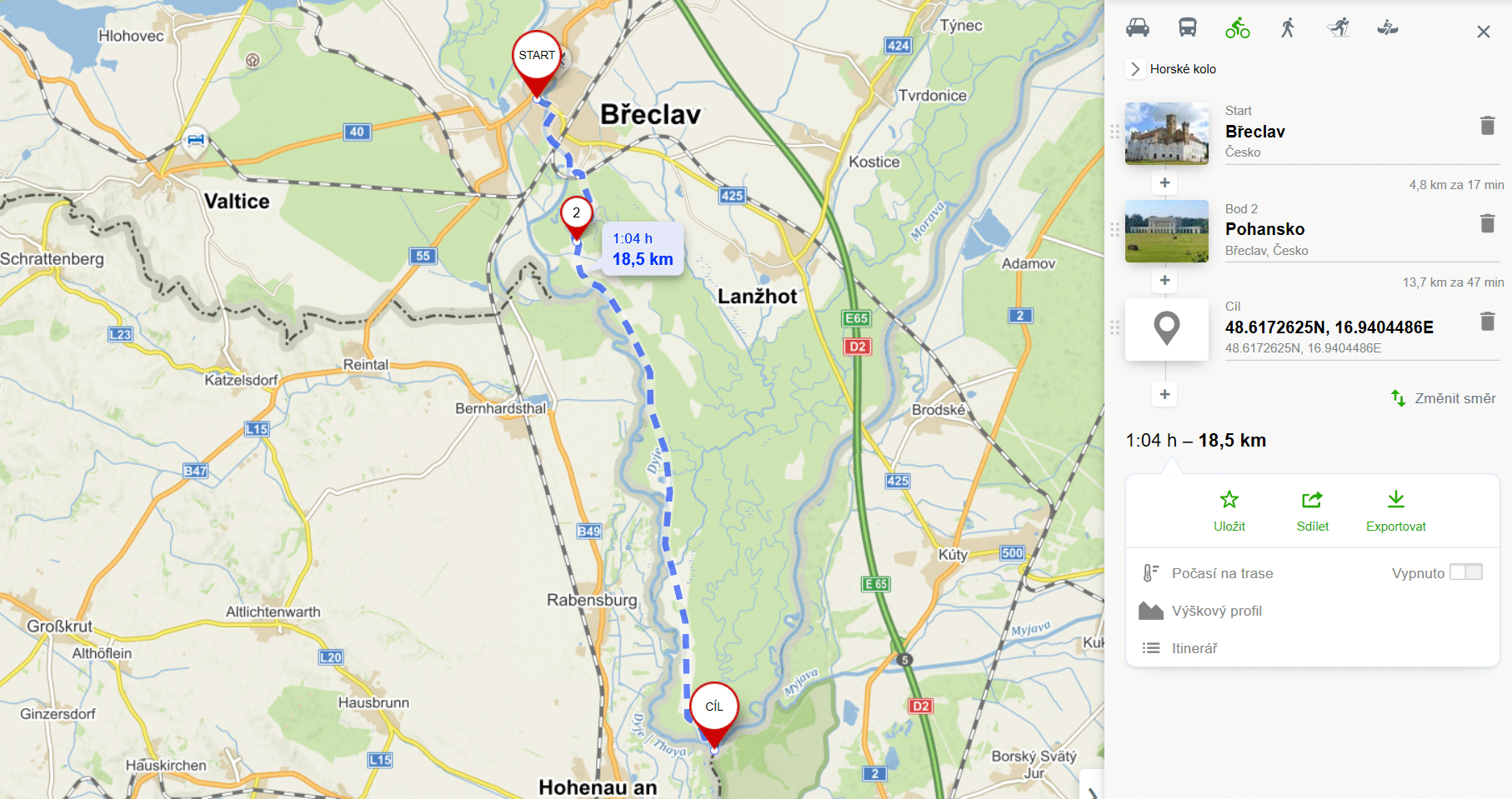
Leave A Comment